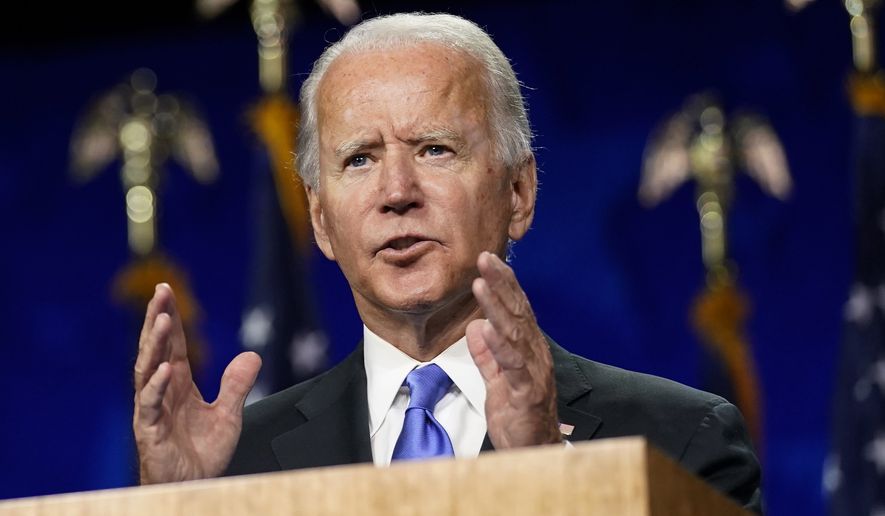OPINION:
This may shock you, but the Biden administration is not telling the complete truth, or really much of the truth at all, when it comes to its proposed tax and spending increases.
Equally surprising, the lack of candor is designed to make both the tax increases and the spending increases appear smaller than they actually are.
The dissembling comes in four flavors.
First, rather than the $2.25 billion price tag that has been talked about in the media for the last few weeks, the actual cost of the “infrastructure” plan is more like $3 trillion. As is now the pattern for this administration, it announced the “infrastructure” plan in general and partial terms, leaving out important details, especially those about the budget implications of the plan. Some of those details subsequently appeared, while some have not surfaced at all.
For instance, a number of spending items in the American Jobs Plan were not included in the original plan and have yet to be seen. These include $400 billion for alternative energy tax credits and anywhere from $300 billion-$600 billion for the actual highway and bridge portion of the plan — which seems like an odd omission for an infrastructure bill.
It is an intentional mischaracterization of the costs by people who know better.
It’s not limited to the “infrastructure” plan, either. Just this week, a study from the Wharton School at the University of Pennsylvania projected that the American Families Act would actually cost $2.5 trillion, not the $1.8 trillion originally claimed by the administration.
Second, the administration, jammed top to bottom with Obama and Clinton retreads with years of experience in the federal government, is intentionally ignoring federal budget rules and norms.
Federal government expenditures and tax revenues are accounted for within a 10-year budget window. The administration has instead counted the costs of the spending increases for just the first eight years in the budget window. That, of course, makes the costs seem smaller than they really are.
At the same time, Biden officials have counted the total increased tax revenues over 15 years, no doubt in part to make it seem that more of the profligate spending is offset by tax revenues. For example, the administration has indicated that the corporate tax increases would net about $2.5 trillion over 15 years. In reality, those increases would raise about $1.7 trillion inside the 10-year budget window.
If the spending were accurately accounted for — and the “missing” parts included — the price tag for the “infrastructure” plan would look more like $4 trillion (or twice the initially proposed $2 trillion), and the offsetting revenue would look more like $1.7 trillion (much less than the initially trumpeted $2.5 trillion). Instead of a plan that was presented as one in rough balance, the administration plan actually adds more than $2 trillion to the credit card.
The difference between the actual price and the initial price is so large that it seems reasonable to infer malicious intent on the part of those presenting – and those reporting — on the numbers.
In short, the administration is lying to the American public, at least about the underlying financial characteristics of the “infrastructure” and taxing plans. In this, they are being abetted — or at least not impeded — by reporters who should know better.
Third, the Biden administration has suggested that better enforcement of the tax laws would raise as much as $700 billion in the next 10 years. That’s nonsense. The Congressional Budget Office last year projected that a $40 billion increase in the IRS budget might generate as much as … $103 billion in revenue over 10 years. It is also important to note — as Team Biden must know — that budget rules prevent imaginary policies such as promises to enforce the laws more vigorously from being included in budget scoring.
Finally, there has been little discussion of the effect of tax increases on the economy.
Economists have long been aware that tax collection causes economic inefficiencies and imposes administrative losses on the economy. It costs people time and money to comply with taxes, and even more time and money to figure out new tax regimes.
How big are these losses? Johns Hopkins University economics professor Steve Hanke estimated in the Wall Street Journal recently that the cost to the economy is about $3.25 for each additional dollar of revenue collected in taxes.
That’s in line with other estimates, including by the Tax Foundation, whose research indicates that Mr. Biden’s proposal to increase the corporate tax rate to 28% would cost the economy $3.48 for each dollar of revenue raised.
Taken all together — hiding details about spending, intentionally mischaracterizing tax increases, traducing budget rules and norms, and failing to address or even consider the administrative losses suffered by the economy — it is clear that the Biden administration is setting the table for grave economic damage.
Worse, they are courting the continued erosion of citizens’ confidence in the honesty and integrity of government.
• Michael McKenna, a columnist for The Washington Times, is the president of MWR Strategies. He was most recently a deputy assistant to President Trump and deputy director of the Office of Legislative Affairs at the White House.




Please read our comment policy before commenting.